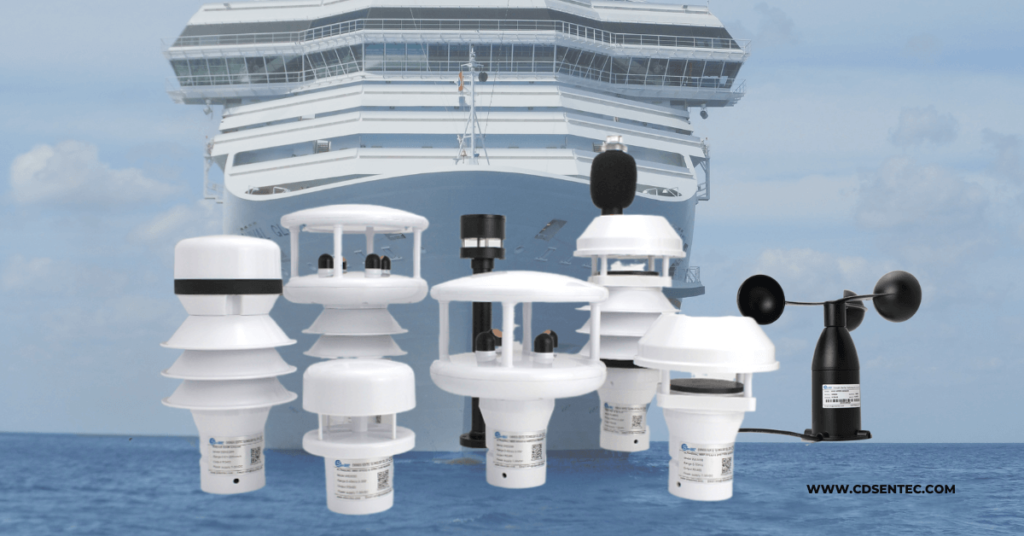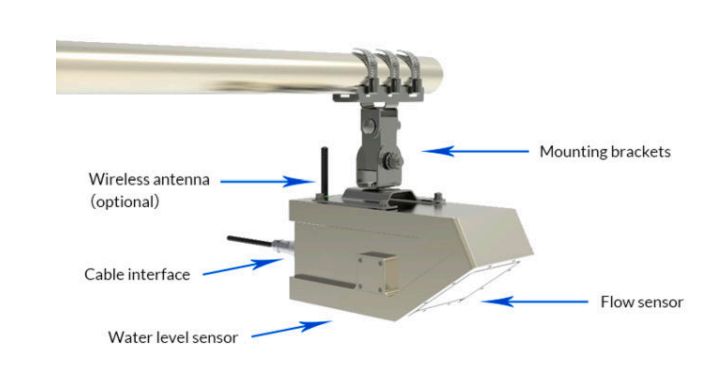Shipborne meteorological instruments play a crucial role in enhancing offshore weather monitoring. These instruments are specifically designed to provide accurate and real-time weather data, ensuring the safety and efficiency of maritime operations. By equipping vessels with advanced meteorological instruments, ship operators can make informed decisions based on reliable weather information. This article explores the importance of offshore weather monitoring, the capabilities of shipborne meteorological instruments, and the benefits they offer to maritime operations.
Importance of Offshore Weather Monitoring
Offshore weather monitoring is of utmost importance for various reasons. Weather conditions at sea can be unpredictable and volatile, posing significant risks to ships and offshore structures. By closely monitoring weather patterns, ship operators can anticipate potential hazards such as storms, high winds, or heavy rainfall, allowing them to take appropriate measures to ensure the safety of crew members and the integrity of the vessel.

Furthermore, accurate weather data is essential for optimizing the efficiency of offshore operations. By understanding weather patterns, ship operators can plan routes that minimize fuel consumption and reduce the risk of encountering adverse weather conditions. This not only saves costs but also reduces the environmental impact of maritime activities.
Shipborne Meteorological Instruments and Their Capabilities
Shipborne meteorological instruments encompass a range of devices that enable the collection and analysis of weather data. These instruments are designed to withstand the harsh marine environment and provide accurate measurements even in challenging conditions. Some of the key capabilities of shipborne meteorological instruments include:
- Wind Speed and Direction: These instruments measure the speed and direction of wind, providing valuable information for navigation and assessing wind-related risks such as gusts or squalls.
- Barometric Pressure: Shipborne instruments can measure barometric pressure, which is crucial in predicting weather changes and identifying the presence of low-pressure systems or storms.
- Temperature and Humidity: Temperature and humidity sensors help monitor the atmospheric conditions, allowing for a better understanding of the overall weather patterns.
- Precipitation: Shipborne instruments can measure various forms of precipitation, including rainfall and snowfall, providing valuable data for assessing the intensity and duration of weather events.
Types of Shipborne Meteorological Instruments
There are several types of shipborne meteorological instruments available, each serving a specific purpose in offshore weather monitoring. Some of the commonly used instruments onboard ships include:
- Anemometers: Anemometers measure wind speed and direction. They are often mounted on masts or booms to ensure accurate readings.
- Barometers: Barometers are used to measure atmospheric pressure. They help predict weather changes and monitor the presence of storms or low-pressure systems.
- Thermometers and Hygrometers: Thermometers measure temperature, while hygrometers measure humidity. These instruments provide essential data for understanding the overall atmospheric conditions.
- Rain Gauges: Rain gauges measure the amount of rainfall, helping to assess the intensity and duration of precipitation events.
These instruments help seafarers forecast the weather and make navigation safer.
Benefits of Using Shipborne Meteorological Instruments
The use of shipborne meteorological instruments offers numerous benefits for offshore weather monitoring. These instruments provide real-time data that allows ship operators to make informed decisions regarding route planning, safety measures, and the overall efficiency of maritime operations. Some of the key benefits include:
- Enhanced Safety: Shipborne meteorological instruments provide accurate and timely weather data, enabling ship operators to identify hazardous weather conditions and take appropriate actions to ensure the safety of the vessel and crew.
- Improved Efficiency: By monitoring weather conditions, ship operators can optimize routes and schedules, minimizing fuel consumption and reducing the environmental impact of maritime activities.
- Cost Savings: Accurate weather data helps prevent unnecessary delays and disruptions caused by adverse weather conditions. This results in significant cost savings for ship operators by reducing downtime and avoiding potential damages.
Weather Systems and Their Impact on Offshore Operations
Weather systems have a profound impact on offshore operations, making it crucial to monitor and understand their behavior. Various weather systems, such as tropical cyclones, frontal systems, and monsoons, can significantly affect maritime activities. By utilizing shipborne meteorological instruments, ship operators can gather essential data on these weather systems and their potential impact on offshore operations.
For example, the presence of a tropical cyclone can pose severe risks to vessels at sea. By closely monitoring its track and intensity, ship operators can make informed decisions regarding route diversions or sheltering in a safe harbor. Similarly, frontal systems can bring strong winds and heavy rainfall, requiring ships to adjust their course or take shelter to avoid potential damages.
Ship Instrumentation Weather Observations
Ship instrumentation weather observations are crucial for generating accurate weather data. These observations involve the continuous monitoring of meteorological parameters using shipborne instruments. By collecting data at regular intervals, ship operators and meteorologists can analyze weather trends and make reliable forecasts.
Ship instrumentation weather observations typically include measurements of wind speed and direction, barometric pressure, temperature, humidity, and precipitation. These observations are recorded and transmitted to meteorological agencies and research institutions, contributing to the broader understanding of weather patterns and climate studies.
Meteorological Instruments Used Onboard Ships
Onboard ships, a variety of meteorological instruments are utilized to gather accurate weather data. These instruments are specially designed to withstand the harsh marine environment and provide reliable measurements. Some of the commonly used meteorological instruments onboard ships include:
- Weather Stations: Weather stations consist of multiple sensors, including anemometers, barometers, thermometers, and hygrometers. These stations are strategically placed on vessels to provide comprehensive weather data.
- Radiosondes: Radiosondes are small instruments that are attached to weather balloons and launched into the atmosphere. They measure various atmospheric parameters, including temperature, humidity, and pressure, as they ascend through the atmosphere.
- Ceilometers: Ceilometers measure cloud height and vertical visibility. They use laser technology to determine the distance from the instrument to the base of clouds or other objects.
- Spectroradiometers: Spectroradiometers measure the spectral distribution of solar radiation. They provide valuable data on the amount and quality of incoming solar radiation, which is essential for understanding the energy balance of the Earth’s atmosphere.
Setting Up a Shipborne Meteorological Station
Setting up a shipborne meteorological station requires careful planning and consideration. The station should be equipped with the necessary meteorological instruments and sensors to collect accurate weather data. The following steps can guide the setup process:
- Identify the Requirements: Determine the specific weather parameters that need to be monitored based on the intended use of the station. This will help in selecting the appropriate meteorological instruments.
- Select the Instruments: Choose reliable and high-quality meteorological instruments that are designed for maritime environments. Consider factors such as durability, accuracy, and compatibility with other onboard systems.
- Installation and Calibration: Install the instruments in suitable locations on the vessel, ensuring they are securely mounted and properly calibrated. Calibration is essential to ensure accurate and reliable measurements.
- Data Collection and Analysis: Once the meteorological station is set up, collect and record weather data at regular intervals. Implement a data management system to store and analyze the collected data for further interpretation and forecasting.
Marine Weather Stations and Their Features
Marine weather stations are specifically designed to withstand the challenging conditions encountered at sea. These stations are equipped with robust meteorological instruments that provide accurate and reliable weather data. Some of the key features of marine weather stations include:
- Durability: Marine weather stations are built to withstand harsh marine environments, including saltwater corrosion, high winds, and vibrations. They are made from durable materials that can withstand constant exposure to these conditions.
- Compact Size: Marine weather stations are designed to be compact and space-efficient, allowing them to be installed on various types of vessels, including ships, boats, and offshore platforms.
- Remote Monitoring: Many marine weather stations offer remote monitoring capabilities, allowing ship operators to access real-time weather data from anywhere. This enables timely decision-making and improves overall operational efficiency.
- Integration with Navigation Systems: Marine weather stations can be integrated with navigation systems, providing seamless integration of weather data with other onboard systems. This integration enables ship operators to receive real-time weather updates while navigating, helping them make informed decisions regarding route planning.
Choosing the Right Meteorological Instruments for Offshore Weather Monitoring
Choosing the right meteorological instruments for offshore weather monitoring is crucial to ensure accurate and reliable data collection. Consider the following factors when selecting instruments:
- Accuracy and Precision: Choose instruments that provide accurate and precise measurements. Look for instruments that have been calibrated and validated by reputable meteorological organizations.
- Durability: Offshore weather monitoring involves exposure to harsh marine conditions. Select instruments that are designed to withstand these conditions and have a proven track record of durability.
- Compatibility: Ensure that the selected instruments are compatible with other onboard systems and can seamlessly integrate with existing navigation and communication systems.
- Maintenance and Support: Consider the availability of maintenance and technical support for the chosen instruments. Regular maintenance and calibration are essential to ensure the instruments continue to perform optimally.
Conclusion
Shipborne meteorological instruments are indispensable for offshore weather monitoring. By providing accurate and real-time weather data, these instruments enhance the safety, efficiency, and overall effectiveness of maritime operations. Ship operators can make informed decisions based on reliable weather information, optimize routes, and minimize risks associated with adverse weather conditions. Choosing the right meteorological instruments and setting up a shipborne meteorological station is crucial to ensure accurate data collection and analysis. SenTec, a leading manufacturer for shipborne meteorological instruments, offers a wide range of high-quality instruments that meet the demanding requirements of offshore weather monitoring. With SenTec’s advanced instruments, ship operators can navigate through smooth sailing, even in challenging weather conditions.
CTA: SenTec is a manufacturer for shipborne meteorological instruments. wmo guide to marine meteorological services




